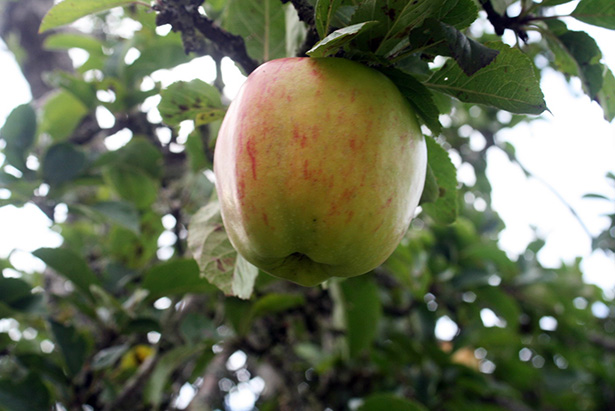Last year I reported on a trip to the Jerte Valley in Extradamura where I saw many Cherry trees. And in fact upon my return i found them for sale at a farm shop in Angus! Last month ( March) I was again in Spain and visited both Madrid and Cordoba Botanic Gardens. Both had collections of herbs and fruit trees, but Cordoba also had splendid indoor displays of Olive, Vine and other traditional crops used for making baskets. However my best experience was seeing the extent of Olive growing in the south of Spain as I literally cycled through 200km of Olive Orchards! I am beginning to get the impression that Spain does its horticulture at a big scale. If ever there were a disease to hit these trees, then the economy of the region would collapse overnight.
The last of the trees along the Via Verde del Aceite were being harvested as i cycled by in early March; I scrumped a few, and was surprised to find them bitter and producing a red stain on my fingers. So much for olive green!

Apparently ( according to wiki) they all need to be partially fermented to make them palatable. I saw men using sticks and a Stihl machine with a long vibrating pole to shake off the last fruits, which were then raked up by hand.
Surprisingly few varieties are grown commercially, and the dozen or so countries growing them tend to have their own favourite varieties. It is a growing industry, olives as we know being associated with healthy diets. Spain is by far the biggest producer, followed by Italy, Greece, Turkey and Morocco, with US and China all getting in on the act it seems.
It is suggested that they are not self-fertile, so a mix of varieties is necessary. I couldn’t discern a mix of trees myself, but there were orchards with a slightly greener leaf colour. The pollen can cause considerable irritation and it is windblown to boot. Glad I don’t live next door to an Olive Farm!
My biggest concern was the fact that there was no ground flora beneath these orchards, or very rarely a patch of yellow flowers, and as a consequence the heavy rains have caused a considerable amount of erosion on the hillsides. The area I travelled through was predominantly limestone and I would have expect to see a good number of flowers.

Pruning was being carried out in many orchards, and seems to be quite brutal with big limbs being cut out of the middle of the trees with chainsaws. Presumably this is to let light in, and to facilitate easier harvesting with many horizontal branches. The spacing between the trees was very wide, well over 8m. Only later from the train window did I see some intensive orchards, with trees planted very close together in lines 3m apart or so. These were quite possibly pruned with hedgetrimmers. I wonder what the productivity is of these trees compared to the more extensive systems? Unfortunately i couldn’t find anyone to ask.
However i’m now back home and enjoying some big Olives Margaret bought at the Deli in Dunkeld. Alas I don’t know where they came from but I will be taking more interest as to where they originated and the variety in future!
Andrew March 2018.








